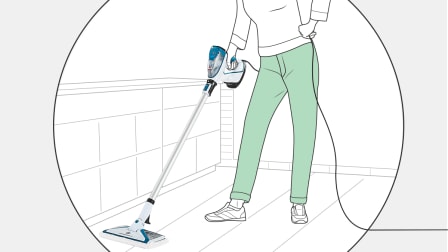How to Stay Safe From Coronavirus While on Planes, Trains, and Buses
Strategies for staying safe while you’re out and about, whether that’s going for groceries or heading back to work

Across the country, millions of Americans are still under local “stay home” orders, which remain in place to mitigate the spread of COVID-19.
But some people still need to commute to their workplace—a hospital, for example—or go grocery shopping. And in some states, leaders have begun taking steps to lift work-from-home orders, opening certain businesses and workplaces. That means many people will be returning to public transit for the first time in weeks.
We talked with experts about why social distancing matters and what steps you can take to protect yourself on buses and trains.
Public Transportation
For those who continue to have to commute each day, or who are resuming their commute because work-from-home restrictions have been lifted in their states: Sit or stand as far from others on the bus or train as you can. If you see someone cough or sneeze near you on the bus or train, and you’re more than 6 feet away from them, your risk is probably low, says David Freedman, M.D., a professor of infectious diseases at the University of Alabama at Birmingham.
If an obviously sick person is right next to you in a crowded train car, however, it’s a bit trickier. “I’m concerned about this sort of profiling of people who are coughing and sneezing,” says Elizabeth Scott, Ph.D., a professor of biology at Simmons University in Boston and an expert in home and community hygiene. “On the other hand, we need to be smart.”
Here’s how.
Change your commute time. If you work in an industry where you still need to commute for work or you live in an area where local travel restrictions are lifting, try to adjust your work hours, if possible, to less busy times. And leave extra time for your commute in case you need to wait for a less crowded train or bus.
Clean your hands as soon as possible after your trip. Surfaces in a public transit setting most likely to harbor the virus are those that are most commonly touched, Scott says, such as the bars you hold on to for balance on the train or bus.
While it might in theory make sense to wipe down those surfaces with a disinfectant before you grab hold of them, it’s not always practical. “It’s impossible to take action on every surface that you come in contact with,” Scott says.
But you should wash your hands as soon as possible after leaving your bus or train. A thorough rub with a hand sanitizer makes sense. Even more important is thorough hand-washing—20 seconds with soap and water. And avoid touching your face with your hands, to keep any germs you might have picked up from getting into your system.
Consider other forms of transportation. Another option is, when possible, to walk or bike to your destination instead of taking public transport.
And if you opt for a rental bike or e-scooter, follow the same precautions as with public transportation, carefully washing your hands after each use. “The virus is not going to jump off the handlebars and jump into your mouth,” Freedman says. Instead, cleaning your hands after you touch the handlebars or any other potentially contaminated surface is probably the best strategy, he says.
Airplanes
The CDC is encouraging everyone to cancel nonessential travel, including trips within the U.S. And according to the Transportation Security Administration, the numbers of people flying have dropped off dramatically since March. Still, if you must take a flight, you can take precautions to stay safe.
Keep your distance. If you do need to travel by plane, it’s worth noting that the risk of the disease being spread through an aircraft’s airflow system is relatively low. That’s because the air is continually filtered through a HEPA filter, which can trap viruses, Freedman says.
Instead, your risk on the plane, as on a bus or train, is being near someone who is infected. On a plane, that means sitting within two seats—to the side, front, or back—of someone who is ill, research suggests. So if you’re seated that close to someone who is obviously sick, ask whether you can change your seat, Freedman says. And with travel down these days, that may be easier than usual.
Practice good hygiene. That includes taking hand sanitizer with you to clean your hands before eating and after you touch surfaces, such as the door handle on the outside of the restroom or the headrests as you walk down the aisle, says Scott at Simmons University. Also consider taking disinfecting wipes for your food tray and other high-touch surfaces, she says.
Cruise Ships
Disease can spread quickly inside the close quarters of a cruise ship, as has occurred in several cases already. For that reason, the CDC now warns against any travel on a cruise ship, particularly for those at higher risk of getting severely ill from COVID-19.




















